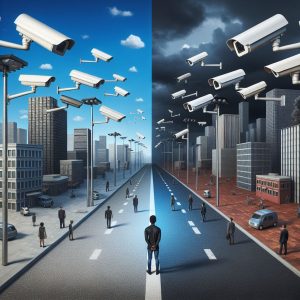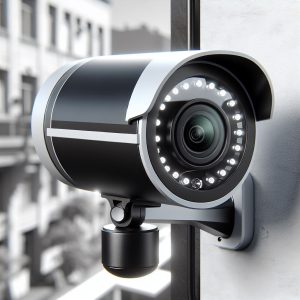Closed-circuit television (CCTV) has become a ubiquitous feature in modern urban landscapes, with millions of cameras installed worldwide. The primary goal of these surveillance systems is to enhance public safety by deterring crime, aiding in criminal investigations, and providing a sense of security to the public. This article explores the multifaceted impact of CCTV on public safety, drawing on various studies and expert opinions.
Historical Context and Adoption
The use of CCTV for public surveillance began in the mid-20th century, but it gained significant momentum in the 1990s and 2000s. The United Kingdom, in particular, has been a pioneer in adopting CCTV technology, with an estimated 1.9 million cameras installed by 2011. The 9/11 attacks further accelerated the deployment of CCTV systems in many cities worldwide, driven by the need for enhanced security measures.
Crime Deterrence and Reduction
One of the primary arguments in favor of CCTV is its potential to deter crime. The presence of cameras can discourage criminal activities by increasing the perceived risk of being caught. A systematic review and meta-analysis of 40 years of research found that CCTV is associated with a modest but significant reduction in crime, particularly in car parks and residential areas. The study highlighted that active monitoring and the integration of multiple interventions alongside CCTV can enhance its effectiveness.
However, the impact of CCTV on crime reduction is not uniform across all settings. For instance, CCTV has been found to be less effective in reducing crime in public transport and city center environments. This variability suggests that the context in which CCTV is deployed plays a crucial role in determining its effectiveness.
Case Studies and Success Stories
Several high-profile cases have demonstrated the value of CCTV in solving crimes. For example, CCTV footage was instrumental in identifying the suspects involved in the 2005 London bombings and the 2013 Boston Marathon bombing. These cases underscore the importance of surveillance cameras in providing critical evidence that can aid law enforcement agencies in their investigations.
In Chicago, a city with one of the largest CCTV networks in the United States, surveillance cameras reportedly helped solve 4,500 crimes over four years. While this number represents a small fraction of the total crimes committed, it highlights the potential of CCTV to contribute to public safety.
Privacy Concerns and Ethical Considerations
Despite its benefits, the widespread use of CCTV raises significant privacy and ethical concerns. The indiscriminate gathering of information on law-abiding citizens can lead to potential misuse and abuse of surveillance data. Civil liberties groups have expressed concerns about the erosion of privacy and the potential for surveillance overreach
Moreover, the “halo effect” and “displacement effect” are unintended consequences of CCTV deployment. The halo effect refers to the potential for increased security in areas outside the view of cameras, while the displacement effect suggests that criminal activities may simply move to areas not covered by surveillance. These effects highlight the complexity of assessing the true impact of CCTV on public safety.
Cost-Effectiveness and Public Perception
The cost-effectiveness of CCTV systems is another critical consideration. Installing and maintaining a comprehensive surveillance network can be expensive, and the return on investment in terms of crime reduction may not always justify the costs. A 2013 Chicago Tribune opinion piece noted that the contribution of CCTV to solving crimes was relatively small compared to the overall crime rate
Public perception of CCTV is generally positive, with a 2013 New York Times/CBS poll finding that 78% of respondents supported the use of surveillance cameras in public places. This support is often driven by the belief that CCTV enhances safety and security, even if the actual impact on crime rates is modest.
Future Directions and Technological Advancements
As technology continues to evolve, so too does the potential for CCTV to enhance public safety. Advances in artificial intelligence and machine learning are enabling more sophisticated analysis of surveillance footage, allowing for real-time detection of suspicious activities and automated alerts to law enforcement agencies.
However, the expansion of CCTV surveillance must be accompanied by robust regulatory frameworks to protect privacy and prevent misuse. Policymakers must balance the benefits of enhanced security with the need to safeguard individual rights and freedoms.
Conclusion
The effect of CCTV on public safety is a complex and multifaceted issue. While CCTV has demonstrated its potential to deter crime and aid in criminal investigations, its effectiveness varies across different settings. Privacy concerns and ethical considerations must be addressed to ensure that the benefits of surveillance do not come at the expense of individual freedoms. As technology continues to advance, the future of CCTV will likely involve more sophisticated systems that can enhance public safety while respecting privacy and civil liberties.





